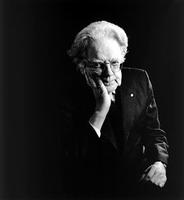
Anatomy of Criticism: Four Essays by Northrop Frye (Princeton, 1957) has had a powerful international influence on modern critical theory. Frye was a learned and eloquent spokesman for the view that literature constitutes an autonomous system, an order of works and words to be studied through a systematic and classificatory approach, as articulated in the essays comprising the "anatomy."
Following his formidable "polemical introduction," Frye set out 4 critical approaches and their corollary theories, upon which he constructed an elaborate typology: "Historical Criticism: Theory of Modes"; "Ethical Criticism: Theory of Symbols"; "Archetypal Criticism: Theory of Myths"; and "Rhetorical Criticism: Theory of Genres." Frye's work has been attacked by critics who see in his approach a dangerous tendency to dehistoricize both literature and criticism; and it has been praised by those who see his as the most powerful arguments to locate "human desire" at the centre of the literary universe.
Frye's long-held view that the Bible stands as the originating document or masterwork of Western literature informs The Great Code (1982) which, with its companion volume Words With Power, may in time supersede Anatomy of Criticism as preeminent in Frye's major works. Anatomy of Criticism has been translated into French as Anatomie de la critique (Paris, 1969) and into German and Italian.

 Share on Facebook
Share on Facebook Share on X
Share on X Share by Email
Share by Email Share on Google Classroom
Share on Google Classroom

